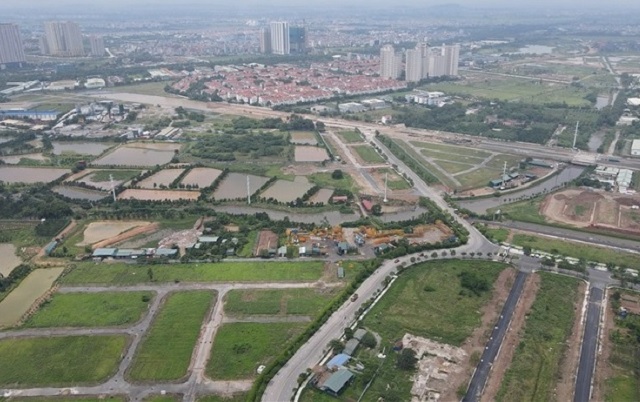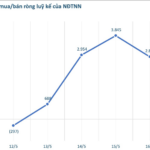
Proposed Land Price Database Construction Process Consists of 9 Steps
|
The draft outlines a 9-step process for constructing a land price database: 1- Preparation; 2- Data and Document Collection; 3- Review, Evaluation, Classification, and Arrangement of Documents and Data; 4- Spatial Data on Land Prices; 5- Creating Digital Documents on Land Prices; 6- Building Attribute Data on Land Prices; 7- Verification and Finalization of Land Price Data; 8- Building Metadata on Land Prices; 9- Inspection and Acceptance of the Land Price Database.
Preparation
According to the draft, preparation includes the following:
1- Developing a detailed implementation plan: determining the timeline, location, volume of work, and human resources required for each step; planning collaboration with relevant units involved in constructing the land price database in the implementation area.
2- Preparing human resources and a workspace.
3- Procuring materials, equipment, tools, and software necessary for constructing the land price database.
Data and Document Collection
The draft clearly states that the following documents and data are to be collected for the construction of the land price database:
– Data on value zones.
– Data on standard land lots.
– Documents on land price tables: Decisions on issuing land price tables; Decisions on adjusting and supplementing land price tables.
– Documents on land price decisions: Decisions on price adjustment factors; specific land prices determined when the state allocates or leases land; land use right value calculation during the equitization of state-owned enterprises; compensation when the state revokes land; transfer contracts; land price survey and investigation forms.
– Data on land lot prices: land prices determined in cases of specific prices; land prices in transfer contracts for land use rights; winning bid prices; and prices collected through surveys and investigations.
– Other documents related to land prices.
The draft specifies that the above-mentioned documents and data are those generated after July 1, 2014.
Review, Evaluation, Classification, and Arrangement of Documents and Data
The review and evaluation process must determine the time of creation, completeness of information, and legal validity of each document and piece of data to select the most suitable ones for constructing the land price database.
Classification and selection of documents for constructing land price data include: Decisions on issuing land price tables; Decisions on adjusting and supplementing land price tables; Decisions on issuing price adjustment factors; Decisions on approving specific land prices; Decisions on recognizing auction winners for land use rights; Information collection forms on land lots; Information transfer forms on financial obligations of land lots; and Notifications on financial obligations of land lots.
The draft states that land price documents must be cleaned and arranged according to data groups and the chronological order of document and data creation.
A report on the results of the review, evaluation, and classification should be prepared.
Spatial Data on Land Prices
Standardization of spatial objects related to land prices:
– Standardization of spatial object layers: value zone layer and standard land lot layer.
– Review and standardization of attribute information for each spatial object related to land prices according to the technical regulations on the national land database issued by the Minister of Natural Resources and Environment.
Conversion and integration of spatial data on land prices:
– Converting spatial object layers into the land database according to administrative units;
– Reviewing spatial data to address any boundary issues between adjacent administrative units.
Creating Digital Documents on Land Prices
According to the draft, digital documents on land prices refer to unstructured land price-related documents converted into digital formats such as PDFs and images for management, exploitation, and use.
Scanning documents to be included in the land price database. The scanning settings should be set to the RGB color model with a minimum resolution of 150 DPI.
The scanned documents include:
– Decisions on issuing land price tables; Decisions on adjusting and supplementing land price tables; Decisions on issuing price adjustment factors.
– Decisions on approving specific land prices; Decisions on recognizing auction winners for land use rights; Information collection forms on land lots.
The draft specifies that scanned files should be processed into digital land price document files in PDF format, with clear and crisp images. The images should be arranged in the same direction, and scanning should be done perpendicular to the document to avoid distortion.
Creating a catalog for searching scanned documents in the land price database.
Establishing links between scanned land price documents (Decisions on approving specific land prices; Decisions on recognizing auction winners for land use rights; Information collection forms on land lots) and the respective land lots in the database.
Building Attribute Data on Land Prices
According to the draft, entering attribute data on land prices into the land price database includes the following:
1- Data on land prices according to the land price tables for localities that have issued such tables down to the level of individual land lots.
2- Data on land price decisions.
3- Data on land lot prices: data on land prices determined in cases of specific prices; land prices in transfer contracts for land use rights; winning bid prices; and prices collected through surveys and investigations, including information collection forms on land lots.
4- Data on the location of land lots, street names or segments, and zones according to the land price tables and price adjustment factors (for land lots with Information Transfer Forms for determining financial obligations related to land).
Verification and Finalization of Land Price Data
Cross-referencing and finalizing land price data with the land price documents used to construct the land price database.
Building Metadata on Land Prices
1- Collecting the necessary information for building metadata (data description) on land prices.
2- Entering metadata information on land prices.
Inspection and Acceptance of the Land Price Database
According to the draft, the implementing unit prepares documents and facilitates monitoring, inspection, and acceptance. A handover report for the land price database should be prepared.
The inspecting and accepting unit verifies the volume and quality of the land price database according to the regulations on supervision, inspection, appraisal, and acceptance of works and products in the field of land management issued by the Minister of Natural Resources and Environment.
Conducting a comprehensive inspection of the land price database and integrating it into the system immediately after acceptance for management, operation, and utilization.








































